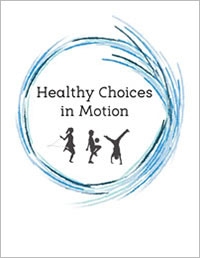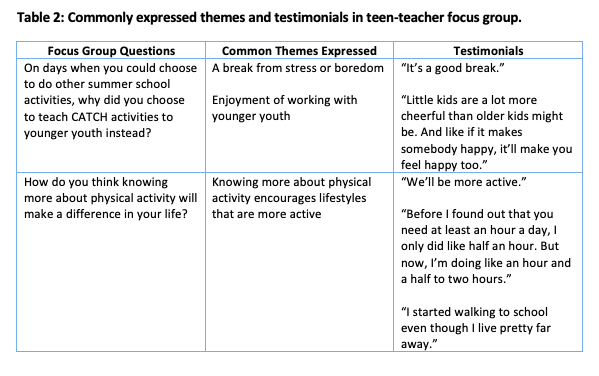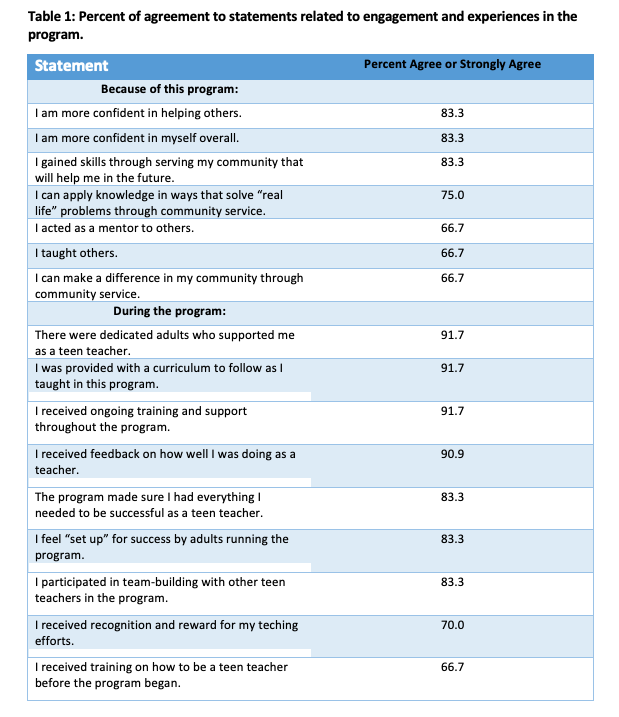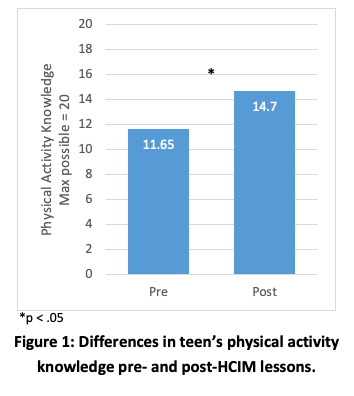75% of teen-teachers reported being physically active on 5 or more days while gaining confidence and leadership skills through innovative Healthy Choices in Motion programming in San Mateo County.
The Issue
Increasing physical activity in San Mateo County is vital, as 67% of SNAP-Ed-eligible adults and 23% of SNAP-Ed-eligible children ages 12-17 were overweight or obese in 2019. Additionally, there is a lack of leadership opportunities for teens especially for those in remote school districts in their county.
How UC Delivers
CalFresh Healthy Living, University of California Cooperative Extension (CFHL, UCCE) in San Mateo County sought to address these issues with innovative teens-as-teachers programming in which older youth led younger youth in Coordinated Approach to Child Health (CATCH) activities as part of a summer school program. Once a week teens would facilitate approximately 30 minutes of structured physical activity (PA) games that build PA engagement and skills.
While this creative approach was a hit with school teachers and students, CFHL, UCCE looked to further improve the project by increasing their teen-teachers' self-confidence as leaders, as well as their PA knowledge. In response, the UC Davis Center for Nutrition in Schools (CNS) and CFHL, UCCE collaborated to pilot the addition of Healthy Choices in Motion (HCIM) to this innovative teens-as-teachers project in the summer of 2019.
Led by UCCE San Mateo educator Marisela Ceron, five HCIM lessons were taught to increase the teen-teachers' PA knowledge and the understanding of the overall importance of PA before leading CATCH activities for younger youth. HCIM is one of the curricula featured as part of the Shaping Healthy Choices Program, a multi-component, evidence-based intervention that is implemented across California in partnership with CFHL, UCCE. This curriculum features lessons about the benefits of PA, the five components of physical fitness, recommendations across the lifespan, and why a variety of PA is important.
Through this novel programming, teen-teachers were able to gain teaching and leadership experience in their community, in addition to their own growth in the practice of PA and PA knowledge. To assess the success of the addition of HCIM to the existing CATCH teens-as-teachers program, PA knowledge questionnaires were administered before and after the HCIM lessons. Teen teacher surveys and a focus group were conducted near the project's end, after which teen teachers taught one additional CATCH acitivity lesson.The project spanned 1 month in Summer 2019.
The Impact
Overall, the teen-teachers increased their physical activity and felt that they gained confidence and leadership and life skills. Upon completion of the HCIM lessons, teens significantly increased their PA knowledge (pre = 11.65 ± 2.9; post = 14.70 ± 3.1; p = .001). When asked about their own physical activity engagement in the teen teacher survey, 41.7% of teens that participated in the project reported being physically active for more than 60 minutes 5 days the previous week and 33.3% reported being active all 7 days.
With ample opportunities to gain involvement in leadership and teaching during this project, students were also asked to rate their level of agreement on statements related to engagement and experiences in the program on a four-point Likert scale. Some noteworthy results were: I am more confident in helping others (83.3%) and in myself overall (83.3%), I gained skills through serving my community that will help me in the future (83.3%), I can apply knowledge in ways that solve "real life" problems through community service (75%).
A focus group with the teen-teachers showed common themes and testimonials of enjoyment working with younger students and being more physically active (Table 2).
Being active in childhood is linked to being active as an adult, in addition to improving heart health, mood, sleep, and strengthening muscles and bones (2009 review, 2018 guidelines). In this way, CFHL, UCCE contributes to health for all and the public value of promoting healthy people and communities.
Attached Images:



